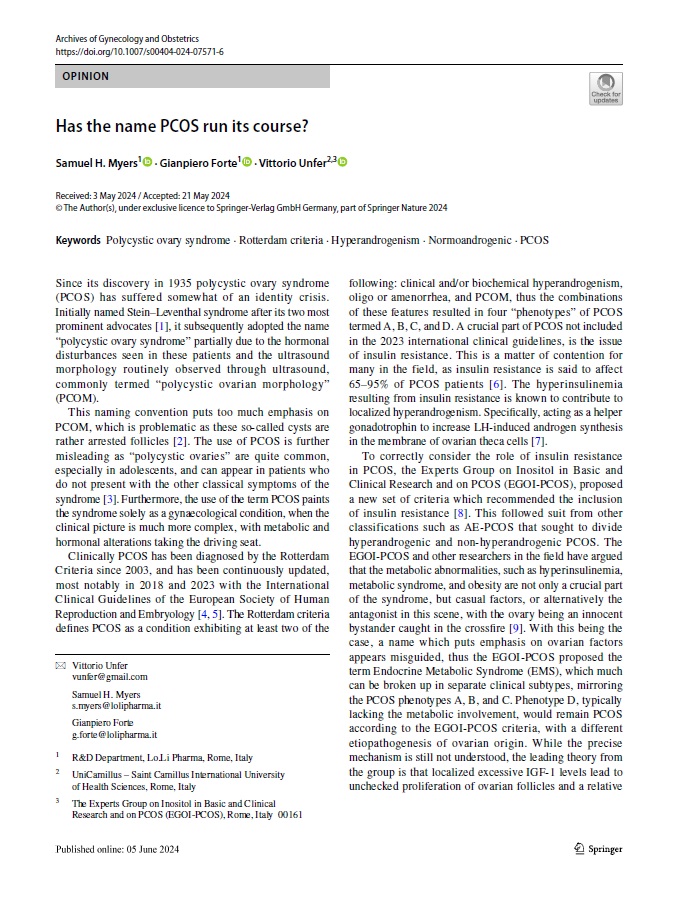Authors:
Samuel H. Myers, Gianpiero Forte, Vittorio Unfer
Since its discovery in 1935 polycystic ovary syndrome (PCOS) has suffered somewhat of an identity crisis. Initially named Stein–Leventhal syndrome after its two most prominent advocates [1], it subsequently adopted the name “polycystic ovary syndrome” partially due to the hormonal disturbances seen in these patients and the ultrasound morphology routinely observed through ultrasound, commonly termed “polycystic ovarian morphology” (PCOM).
This naming convention puts too much emphasis on PCOM, which is problematic as these so-called cysts are rather arrested follicles [2]. The use of PCOS is further misleading as “polycystic ovaries” are quite common, especially in adolescents, and can appear in patients who do not present with the other classical symptoms of the syndrome [3]. Furthermore, the use of the term PCOS paints the syndrome solely as a gynaecological condition, when the
clinical picture is much more complex, with metabolic and hormonal alterations taking the driving seat.

